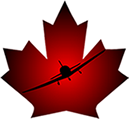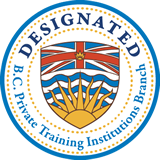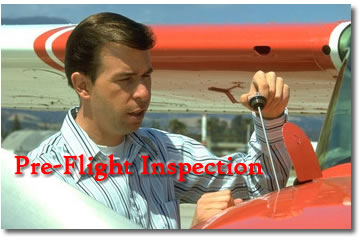 |
|
“Nobody
who gets too damned relaxed builds up much flying time.” I have the opportunity to observe pilots, day after day, preparing their aircraft for flight. I see an interesting variety of techniques and styles. On occasion, I have learned a good trick or two. Each one of us, of course, has his or her own way of going about things. Some of us are painstaking and methodical and through. Others of us, somewhat less so. A few of us are pretty darned casual about how we approach this very important job of inspecting an aircraft before flight. Most of the time we will get away with almost anything. Unfortunately, not always. Transportation Safety Board report Number A00P0077
reads, in part: at 0850 Pacific daylight time, May 10, 2000, a Bell 47
helicopter, piloted by a student pilot and his flight instructor, took
off from the south ramp of Abbotsford Airport in visual meteorological
conditions. On departure, as the helicopter climbed through about 700
feet above ground level, still over the airport, it lost tail-rotor thrust
and began to spin to the right. The nose then dropped and the spinning
turned into a spiral. As it descended further, the helicopter appeared
to be totally out of control. It struck the ground in a steep, nose-down
attitude on the infield of the airport, broke apart, and a post-impact
fire ensued. Both occupants were fatally injured by the impact forces.
As we learn from the tragic accident described above, becoming very familiar with the inspections requirements of the aircraft you fly and following them before each flight should be a very high priority. The lives of a very promising young instructor and his student, who, no doubt, had great hopes for a career in aviation, ended suddenly that day for what, looking back, was such a small oversight: a failure to check the oil level in the tail rotor gear box. “But the aircraft is just back from the shop. Everything should be ready to go,” you say. I agree. But, witness the truth: mechanics are human, just like you and I. They, just like you and I and everyone else on this little blue planet of ours, make mistakes, even the very best of them. Knowing that an aircraft has just been serviced should be a clear flag for all of us to complete a very good inspection before flight rather than a moment to relax and let our guard down. We know things have been tampered with, worked on, changed. An outstanding example is recorded in the TSB accident
Report Number A01Q0009, which describes the events of January 13, 2001
at Mascouche, Quebec. It reads, in part, a Piper Cherokee PA-28-140, with
two pilots on board, took off from Runway 29 on a visual flight rules
flight. During climbout, about 25 feet above ground level, the aircraft
rolled to the left. The pilot flying, who was also the owner of the aircraft,
applied right aileron to compensate for the turn, but the aircraft continued
to turn left. The other pilot also tried to straighten the aircraft by
applying right aileron until the ailerons jammed in the full right position.
The aircraft flew over Highway 640, and the left wing tip struck a snowbank
on the side of the highway. The aircraft had been in for maintenance about a week previously. The right tire and brake rotor and pads had been replaced. Apparently, the mechanics had failed to notice that their U fitting was still attached to the aircraft when it left the shop. The aircraft had been flown all week by quite a number of different pilots and instructors, including me. None of us had noticed that extra pound of metal riding along. Fortunately, the piece did not vibrate loose and fall from the aircraft in flight. Fortunately, it did not shake loose and create a hazard on a taxiway or runway for landing or departing aircraft. Fortunately, it was not the type of obstruction that would cause any control difficulties for the aircraft in flight. Fortunately. The fact remains, however, that I and several of my colleagues flew that aircraft for a week without noticing the problem even though the aircraft was inspected before each flight. The next time you walk out to your aircraft ready to go flying, maybe just take a moment for a deep breath. Enjoy the process of carefully inspecting that lovely creation which sits poised to take you into the sky. Kick the tires and light the fires may work, if you’re lucky, for years and years. And then, it may not. All considered, a careful check of all the items on the pre-flight list and a very good look at the aircraft you are about to fly—particularly right after mechanical work has been performed—is a small price to pay for the peace of mind you will earn. If there is a problem with an aircraft, wouldn’t you just love to find it on the ground where it can be easily rectified rather than in the air where it may become a serious and potentially lethal problem? I know I would. |



